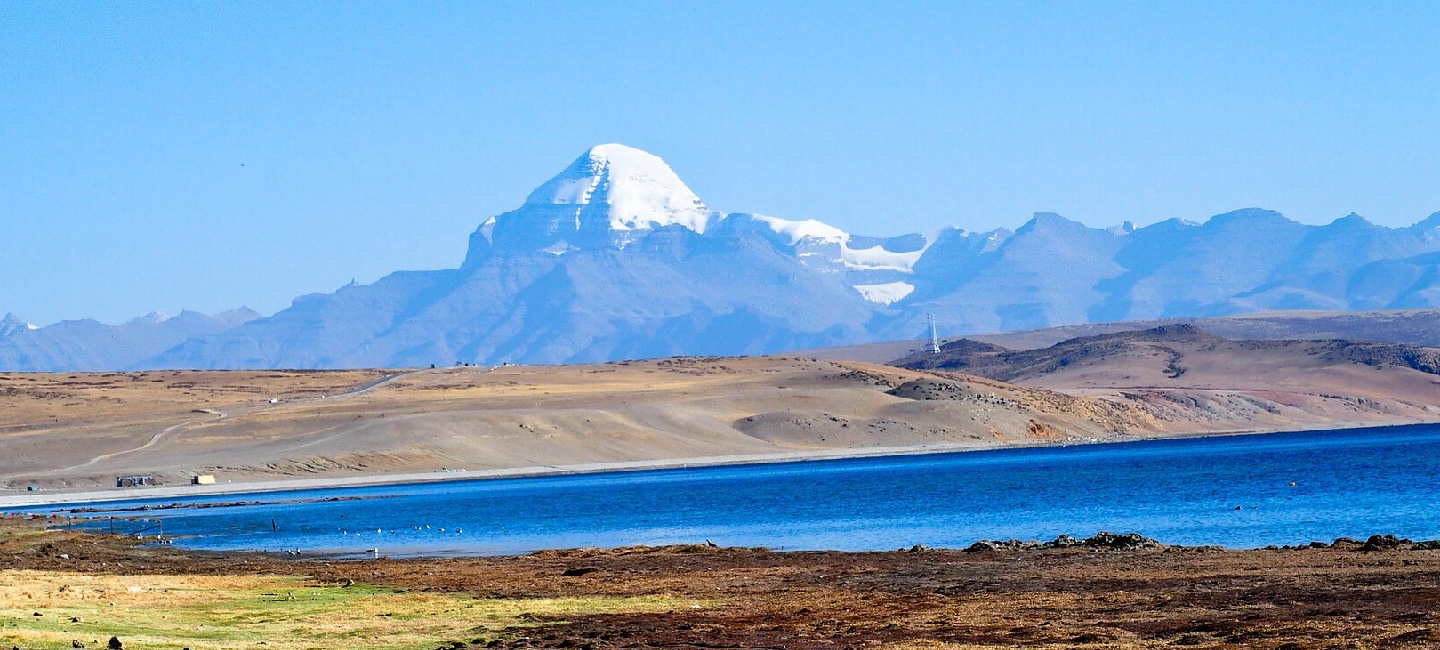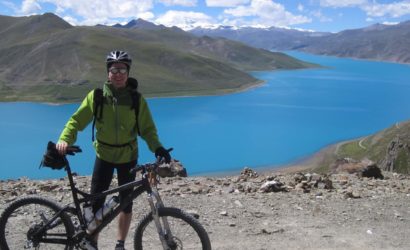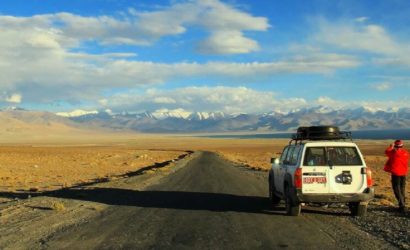Mount Kailash a holy mountain stands at 6714 meters a very popular mountain peak of Tibet, also known by the name of Tise, Kailash or Kang Rinpoche (Jewel of the Snows). This Kailash Mansarovar trip offers you the best experience of trekking and passing the remote western part of Tibet.
Mt Meru (Kailash) is sacred to the Hindus, Buddhists, Janis, and the Bonpos taken as the centre of the physical and metaphysical universe.
For the Hindus, the mountain represents the seat of Shiva. For the Buddhists, a terrestrial projection of the cosmic mandala of Dyani Buddhas and Boddhisatvas (which represents the wheel of life).
For the devout pilgrim a visit to Mt. Kailash Mansarovar trip forms the ultimate realization of their spiritual pursuit, and for the adventure-lovers it offers rugged beauty, remoteness and solitude.
If you tour to Mount Kailash during the month of May it gives you the opportunity to face Buddhist festival of Saga Dawa while most of the other trips are planned to arrive at Mt. Kailash during the full moon period to give all participants a rare experience. A journey you can truly call as `once-in-a-lifetime.
This tour offers rigorous overland driving, trekking and camping, passing the remote and wild western Tibet, in altitudes between 2,745 meters to 5600 meters.
Upon your arrival in the Kathmandu airport after completing your custom formalities Visa, etc. pick up your luggage and look for our airport representative from Himalaya Discovery Adventures, who will display your name on the board at the arrival gate.
You will be greeted by our representative and transferred to your the hotel.
Today is free for sightseeing in Kathmandu. You may wish to visit Durbar Square in the heart of the old city where the old Royal Palace, with its intricate woodcarving is located. The whole area is a maze of temples and images. Leading away from the square in all directions are narrow alleys, full of the most amazing variety of shops and stalls.
Some of these landmarks are considered World Heritage Sites including the historic Bhaktapur Durbar Square, the famous ‘Monkey Temple’ Swayambhunath and Buddhists shrine Buddhanath which is one of the largest Stupas in the world.
There will also be a full trip briefing today with gear check. In case you need to hire or buy equipment locally there will be time to do this today.
Depart at 6.00 am from our Hotel in Kathmandu and drive through the Nepal reaching the Tibet border along the famous Araniko Highway. We stop for a quick breakfast at Dhulikhel and lunch at Kodari.
After immigration and custom formalities on both sides (Kodari and Zhangmu) we drive to the small town of Nyalam (3750 meters), Total distance 125 km from Kathmandu to Nyalam. Overnight at guesthouse.
Overnight at guesthouse.
After breakfast drive to Paryang. Passing through many villages and yak herders camps. Far south you can see snow-capped mountain peaks.
Most of the time you trip on the plains, hence a quiet drive. Arrive in Paryang and drink hot tea. Overnight at guesthouse.
After breakfast we drive across the vast Tibetan plateau to Prayang (225km). A packed lunch will be served on the way.
Total distance 250 km and approximate driving time will be 7 hours. Overnight at guesthouse or tented camp.
The experience of being in the abode of God – a life-time achievement: Puja, Havana-worship, meditation, holy dip, Tarpan, later we drive to Darchen (4570 meters).
Preparation day for Kailash Kora (parikrama). Overnight at guesthouse.
After breakfast drive to Tarboche–Kailash Parikrama’s starting point. Tarboche is also referred to as “Asthapath” within.
It’s one of the exciting days walking along the stunning rocky cliffs; waterfalls with some clouds in the clear blue sky make you feel like Great God Shiva is blessing you everywhere.
Occasionally, Kailash Parbat’s face will continue to appear. It takes nearly 7 hours for 7 km of track. Overnight at government guesthouse.
You’re going to climb to Drolma-la (Dolma-La 18600 ft) today and slowly descend to Zuthulpuk (4760 m).
To reach the Shiva-sthal, Yamasthal should be crossed as your steps approach the pass. Overnight at guesthouse.
Trek over Dolma La Pass (5600 meters) and trek down to Zudulpuk (4800 meters), Overnight at tented camp.Free time in the morning to visit caves, temples and shrine around the cave of Milarepa.
All the driving team will be waiting for your return after 3 hours of running. You will be at your lodge in Dongba by late afternoon. Overnight at guesthouse.
Drive Dongba to Nyalam (376 km) 7-8 hrs. Overnight at guesthouse.
Today we’re leaving behind Nyalam. We pass the river Bhote Koshi and cross the border between Chinese and Nepalese.
We give our Tibetan guide a goodbye after a short drive. Then we ride and walk to Kodari’s Nepal Immigration control. The re-entry formalities will be done by our Nepalese staff and we will drive to Kathmandu.
It’s also spare day in case of bad weather in Lukla. If you get interested to take some gifts from Nepal for friends and relatives, visit to some nearby shops or go out in Thamel for typical Nepalese goods.
The trip concludes! Our representatives will drop you off at the airport, according to your flight schedule.
The trip concludes! We will drop you off at the airport, according to your flight schedule.






